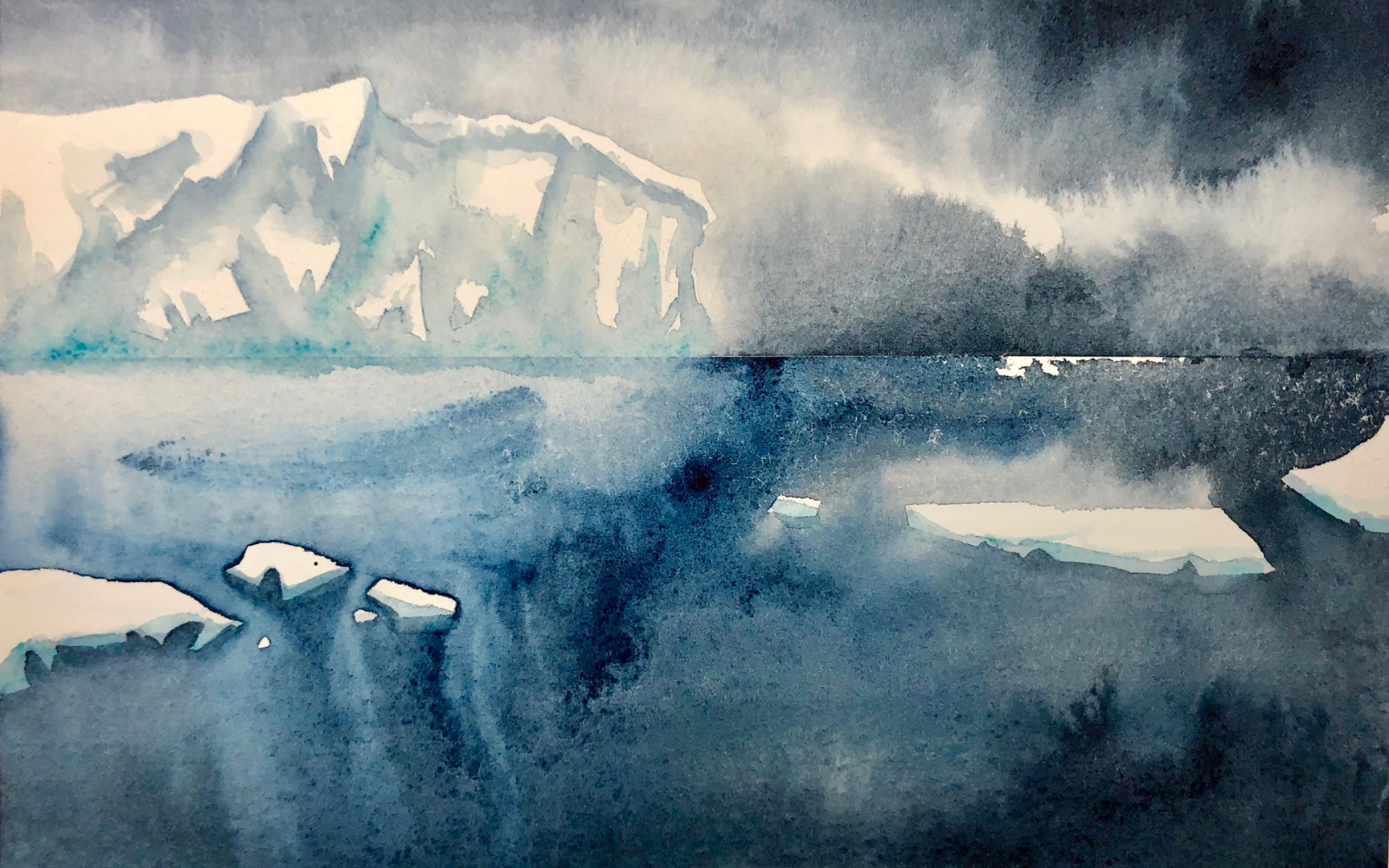Ice Shelf, watercolor Copyright © Marlo Garnsworthy
I love Monday nights.
Monday night is creation night. It’s hastily-shoveled-in-leftovers-in-the-studio night or earbuds-in-laptop-on-local-pub night. This week, it’s also the first night of Polar Week!
Kev and I have been furiously preparing to launch Pixel Movers & Makers and working on our first animation about Antarctica's Pine Island Glacier.
But for the last couple of months, I’ve also been working feverishly on something I’ve called the Sea Ice Sketch Project. I’ve been painting watercolor (or watercolour, depending on where you are) sketches of sea ice… and ice shelves and polar ice in general. (Some of the pieces have become banners for our website.)
My passion for polar ice began, it’s true, with sea ice. But it’s spread quicker than katabatic winds can steal your gloves to all polar ice. And so now, I’ve renamed it the Polar Ice Sketch Project. (Let it be duly noted that one of my brilliant friends suggested I call it the Icy Poles project, but I wasn’t sure anyone but fellow Aussies would get the reference.)
I’ve been trying to film my painting process. My first effort was going well until disaster struck…
Not enough painter's tape on my desk lamp. But I'm working it out.
Here, I put the finishing touches on the ice shelf in the painting at the top of this post.
I'll be using similar techinues — and some others — as we continue our first animation project. I look forward to sharing!
I always paint to music. Here's what was on my Spotify during the above video (and which YouTube made me record over, alas): Youme & Meyou by Einstürzende Neubauten.








